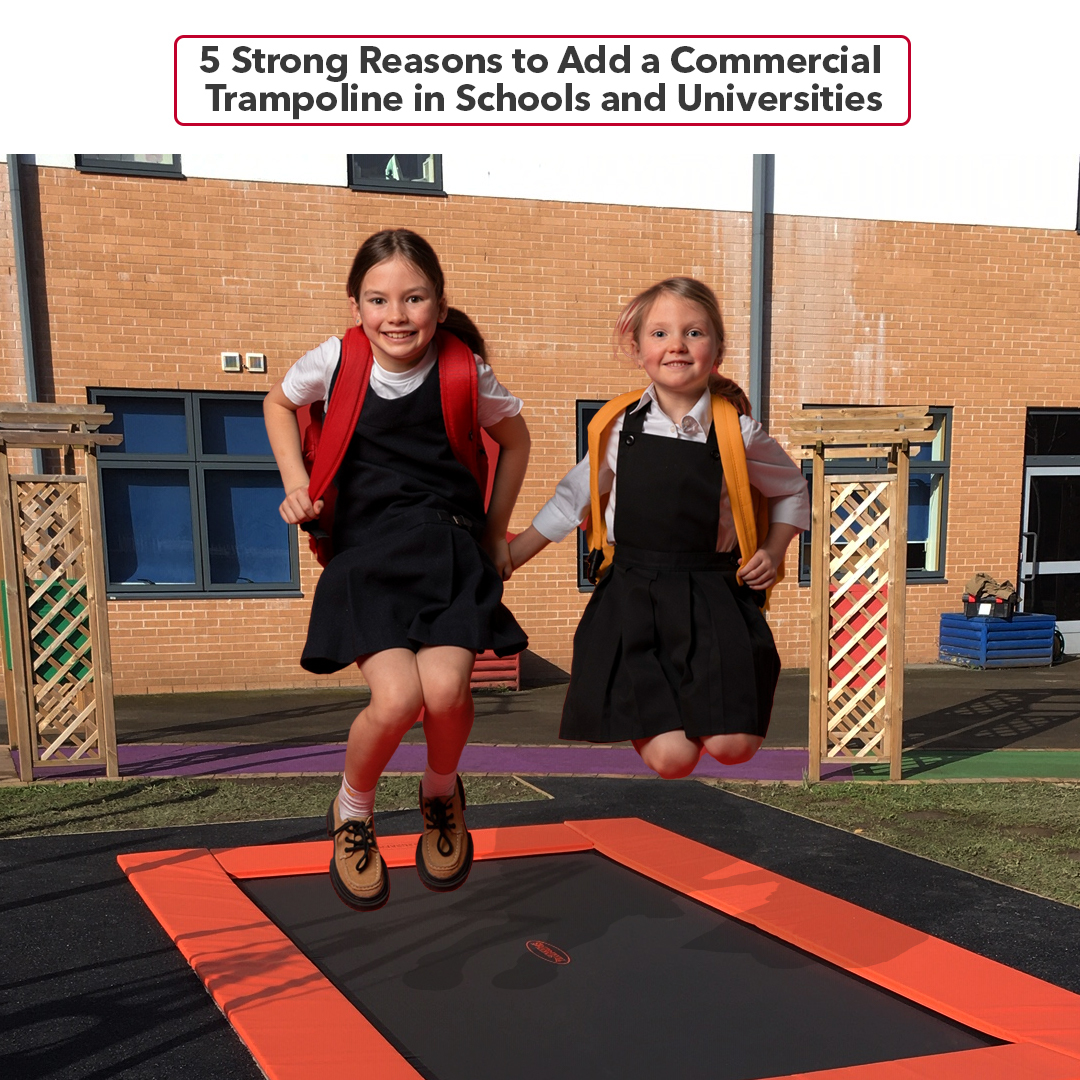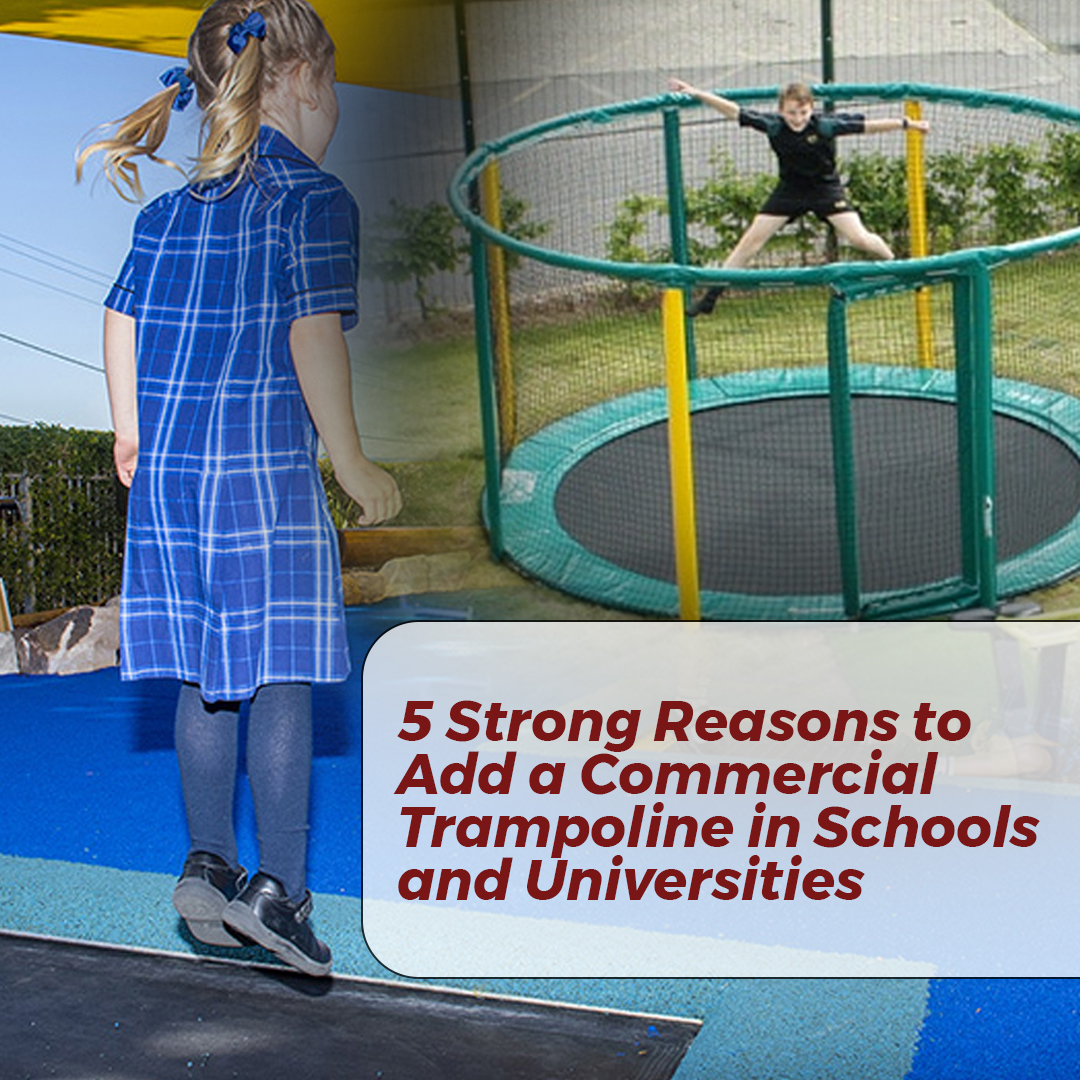Table of Contents
ToggleTrampolines are not just for recreation and fun anymore. In recent years, many schools and universities have started to introduce a commercial trampoline as part of their curriculum and extracurricular activities. This trend is part of a wider movement promoting active learning and physical stimulation for students.
Regular bouncing on a trampoline has been shown to improve cognitive abilities. Students who take breaks to jump on a trampoline during long study periods find their concentration and learning retention improve.
In this blog, we will discuss 5 Strong Reasons to add a Commercial Trampoline in Schools and Universities.
Physical Fitness and Exercise
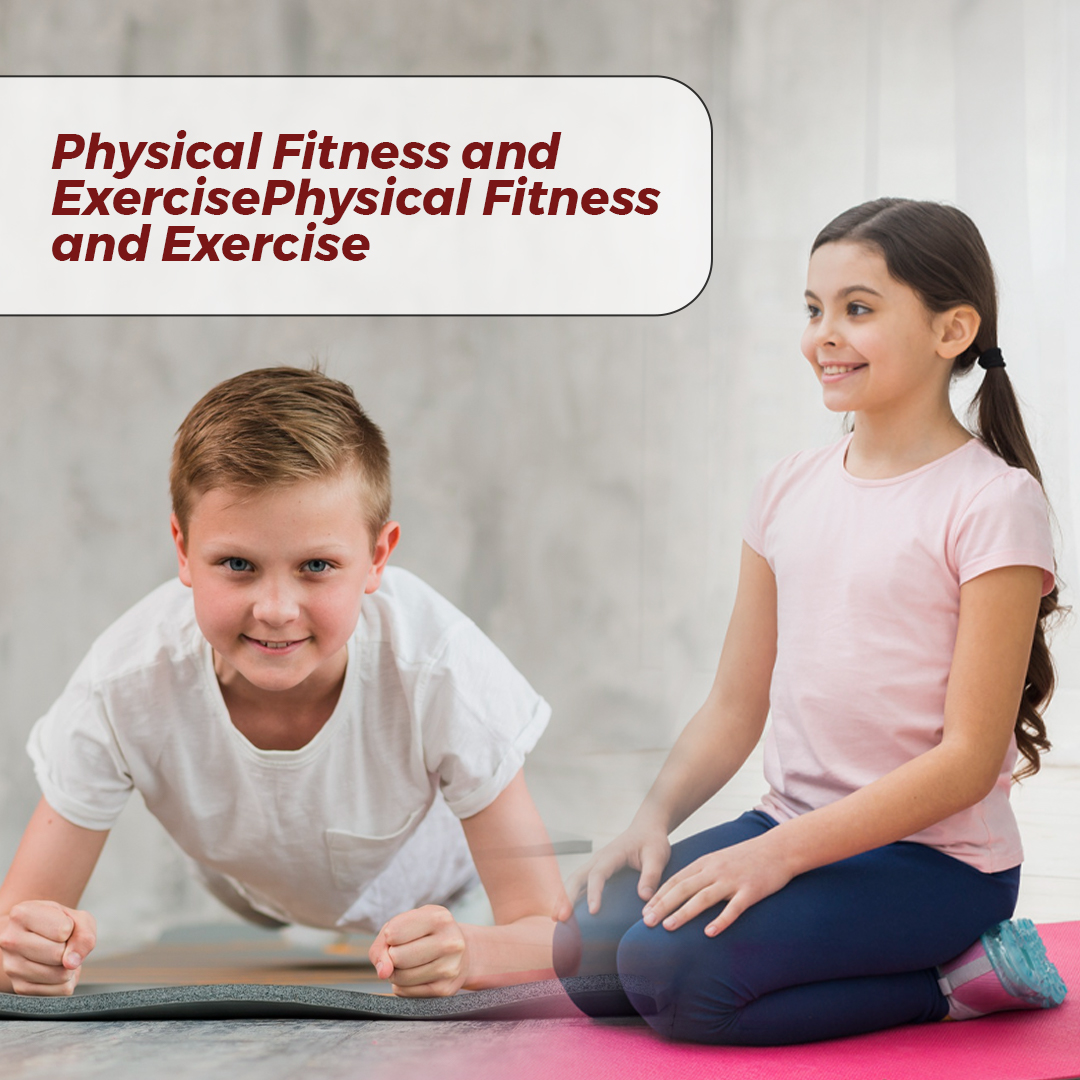
Trampoline exercises contribute to improved cardiovascular health. Bouncing on trampolines strengthens muscles and enhances overall fitness. Jumping on a trampoline provides an excellent cardio workout. In just 15-30 minutes of bouncing, you can get your heart rate up and break a sweat. Studies show trampolining for 30 minutes burns more calories than running, as it works nearly every muscle in your body. This can help strengthen your heart and improve stamina over time.
Full body muscle workout
Trampolining works all the major muscle groups in your body through repetitive bouncing motions and aerial manoeuvres. It helps tone muscles in your legs, core, glutes, and upper body. The constant stabilisation required engages your core muscles with every bounce. You’ll feel it in your abs and back after just a few minutes of jumping.
Doing tricks and flips on a trampoline provides an even more intensive workout. A single front or back flip requires an enormous amount of strength and coordination.
Low impact
Unlike many other exercises, trampolining provides an effective cardio and muscle workout with minimal impact on your joints. The suspended, weightless feeling when bouncing reduces stress on joints, bones and connective tissue. This makes it an ideal activity for people of all ages, fitness levels and physical abilities. The low impact nature also means a lower risk of injuries compared to high impact exercises like running.
Trampolining is a fun recreational activity that also provides amazing health and fitness benefits for both kids and adults.
Mental Well-being and Stress Reduction
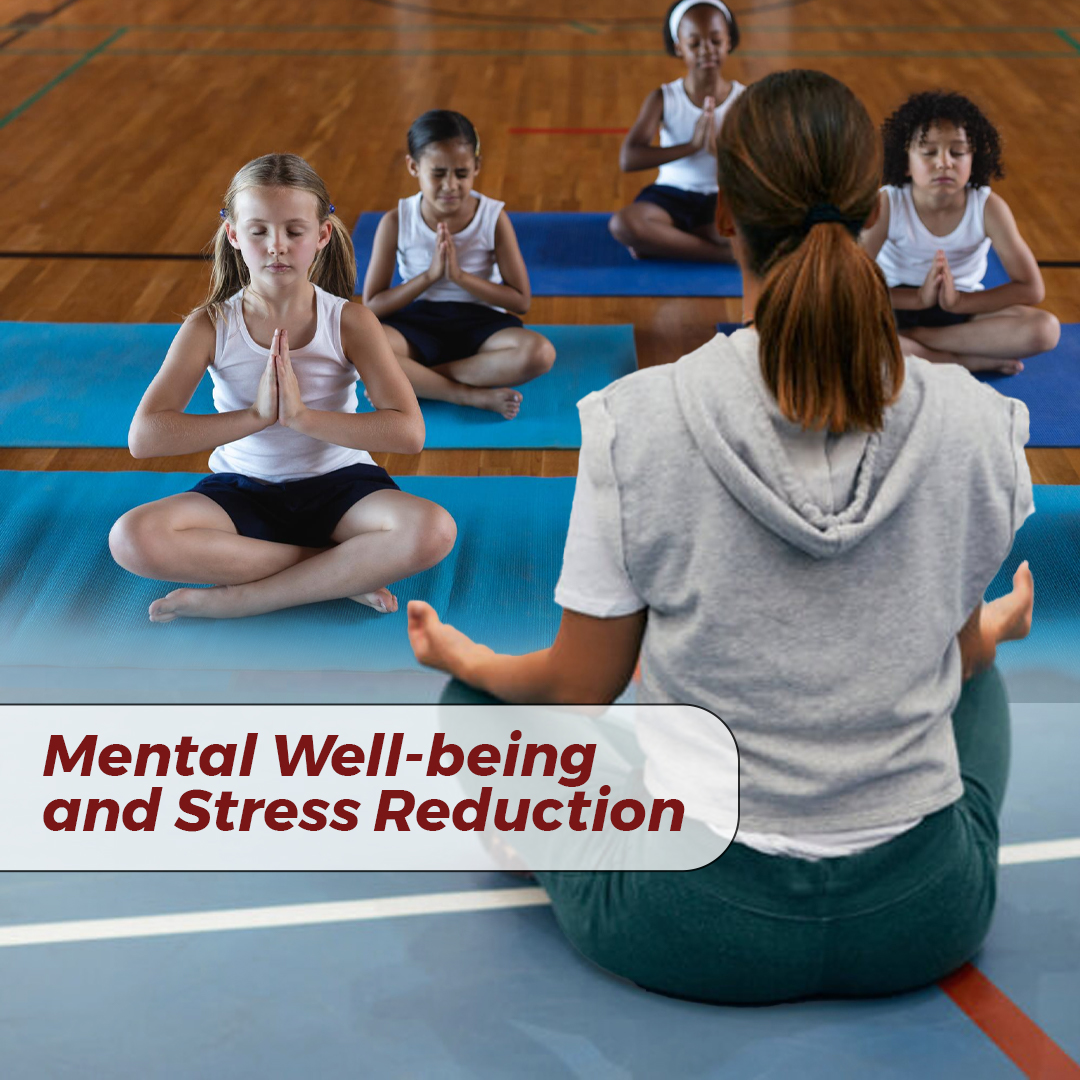
Fitness trampoline activities help in reducing stress and anxiety among students. Engaging in trampoline exercises can positively impact students’ mood and focus.
Trampolining also improves focus and concentration. The act of balancing, jumping and stabilising yourself on the trampoline mat engages your core muscles and challenges your mind-body connection. This can have significant benefits for attention span and focus that translate to the classroom.
For students struggling with conditions like ADHD or ADD, trampolining may provide an ideal outlet to burn off excess energy in a constructive way. The sensory stimulation of jumping on a trampoline, including the feeling of your body in motion, the sounds of the springs and mat, and the visual perception of height, can have a regulating and calming effect.
- Improved sleep – The physical activity from jumping on a rectangle trampoline leads to greater sleepiness at night, resulting in improved sleep quality and duration. Adequate sleep is essential for health, mood, and focus during the day.
- Release of happy hormones – Trampolining causes the release of endorphins like dopamine, serotonin and endocannabinoids. These natural chemicals are responsible for improved mood. They act as the body’s natural antidepressants and stress relievers.
Adding a commercial trampoline on school grounds provides an innovative way for students to engage in physical activity and experience the mental well-being benefits that come with it. While trampolining should always be done under proper supervision and with the necessary safety precautions, it can be an ideal outlet for students to ease anxiety and improve their mood, focus and sleep.
Social Interaction and Team Building

Trampolining is a fun activity that promotes social interaction and team building. As students take turns bouncing, they naturally chat, laugh, and bond over the shared experience. Playground trampolines give students an opportunity to interact with classmates they may not usually socialise with during regular lessons.
Improves Communication
Communication skills are enhanced through partnering up or small group activities on the 12ft trampoline. Students have to verbally coordinate with each other to start and stop bouncing, perform skills together and spot one another. This helps foster listening, comprehension and cooperation.
- Partners have to listen to understand how high and fast the other wants to bounce.
- Small groups work together to create short trampoline routines, developing planning and creative thinking skills.
- Spotting a partner requires clear communication to ensure their safety and build trust.
Develops Teamwork
Teamwork is an essential life skill developed through group garden trampoline activities. Whether students are simply taking turns to bounce or collaborating to achieve a common goal, a team mentality is nurtured. Leadership qualities also emerge as students guide their peers and work together towards success.
- Timed challenges and games promote teamwork by requiring students to bounce cooperatively.
- Creating group routines and performances helps cultivate a shared purpose and accountability to others.
- Spotting partners and groups relies on teamwork to keep everyone safe and achieve maximum bounce heights.
Trampolining should be considered an important tool for building social and emotional skills in students. By incorporating group activities and partner work into lessons, trampolines can positively impact development beyond just physical benefits. Social interaction, communication and teamwork are lifelong skills that trampolining helps foster in a fun, engaging way.
Enhanced Learning Through Engagement
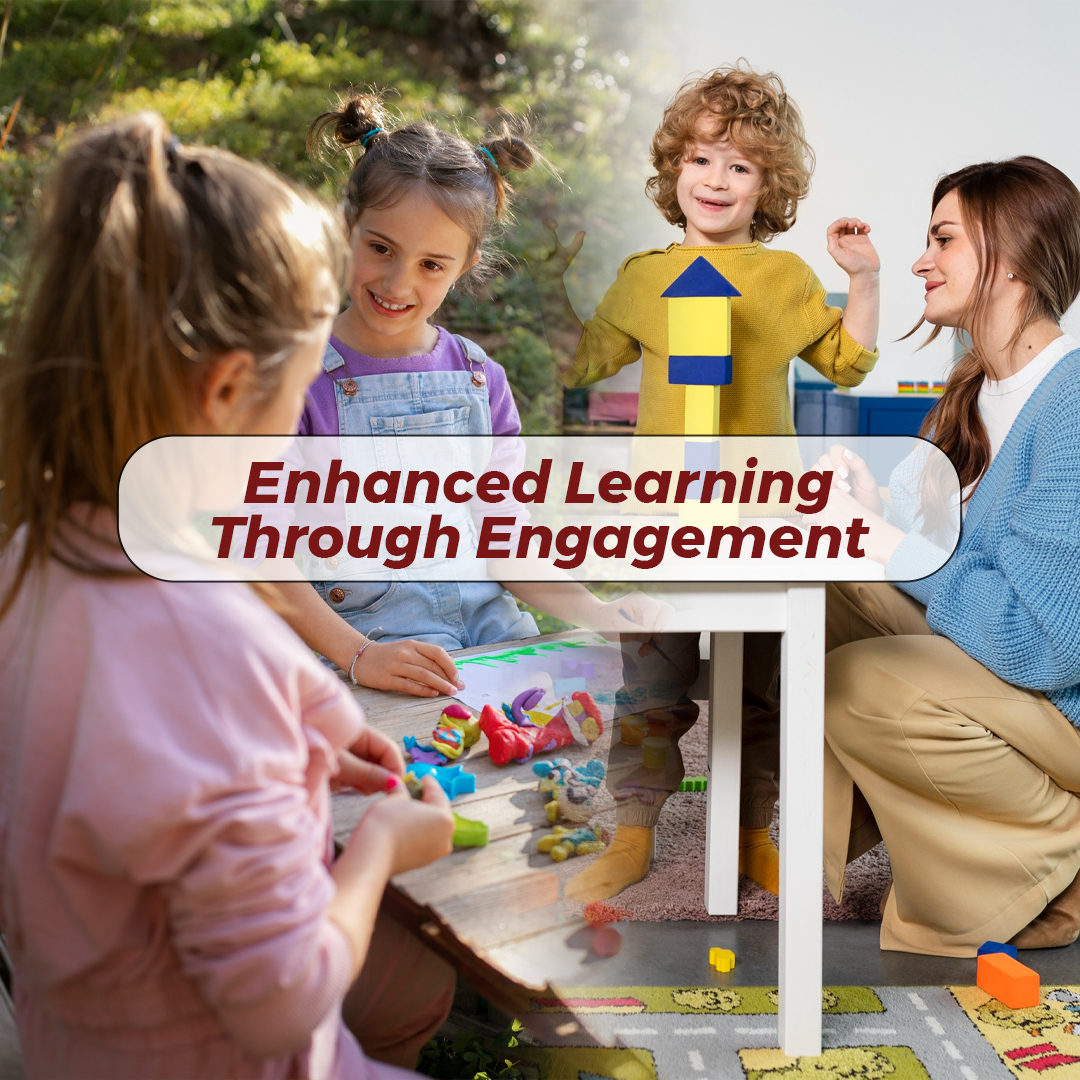
Trampolines in schools and universities boost engagement and motivate students to learn through an interactive experience. Jumping on trampolines isn’t just fun, it also enhances cognitive abilities, focus, and memorization.
- Students can physically engage with topics they’re learning in science, maths, physics, and biology classes. For example, measuring the relationship between jump height and energy, or calculating acceleration and velocity. This hands-on approach reinforces concepts and theories.
- Trampoline activities release dopamine, the ‘feel-good’ hormone in our brain that enhances mood and motivation. Students will be more engaged and excited to learn, especially for those who struggle in traditional classroom settings.
- Jumping improves circulation which increases blood flow to the brain. This stimulates the hippocampus, the part of the brain responsible for memory, learning, and cognitive functions. Students will absorb and retain more information.
- Team building games and challenges on 10ft trampolines promote social interaction, communication, and trust between students which translates to a more collaborative learning environment.
- The springy, bouncy surface of the trampoline creates a playful space for imaginative thinking. This stimulates creativity by activating both sides of the brain. Innovative and resourceful thinking are increasingly important skills for students to develop.
Whether used for short activity breaks, team building, curriculum-based learning or open-ended play, trampolines offer an engaging experience for students to learn dynamically. The benefits to cognitive abilities, focus, memory, social skills, and creativity provide a strong case for adding commercial trampolines to schools and universities.
Improved Focus and Concentration
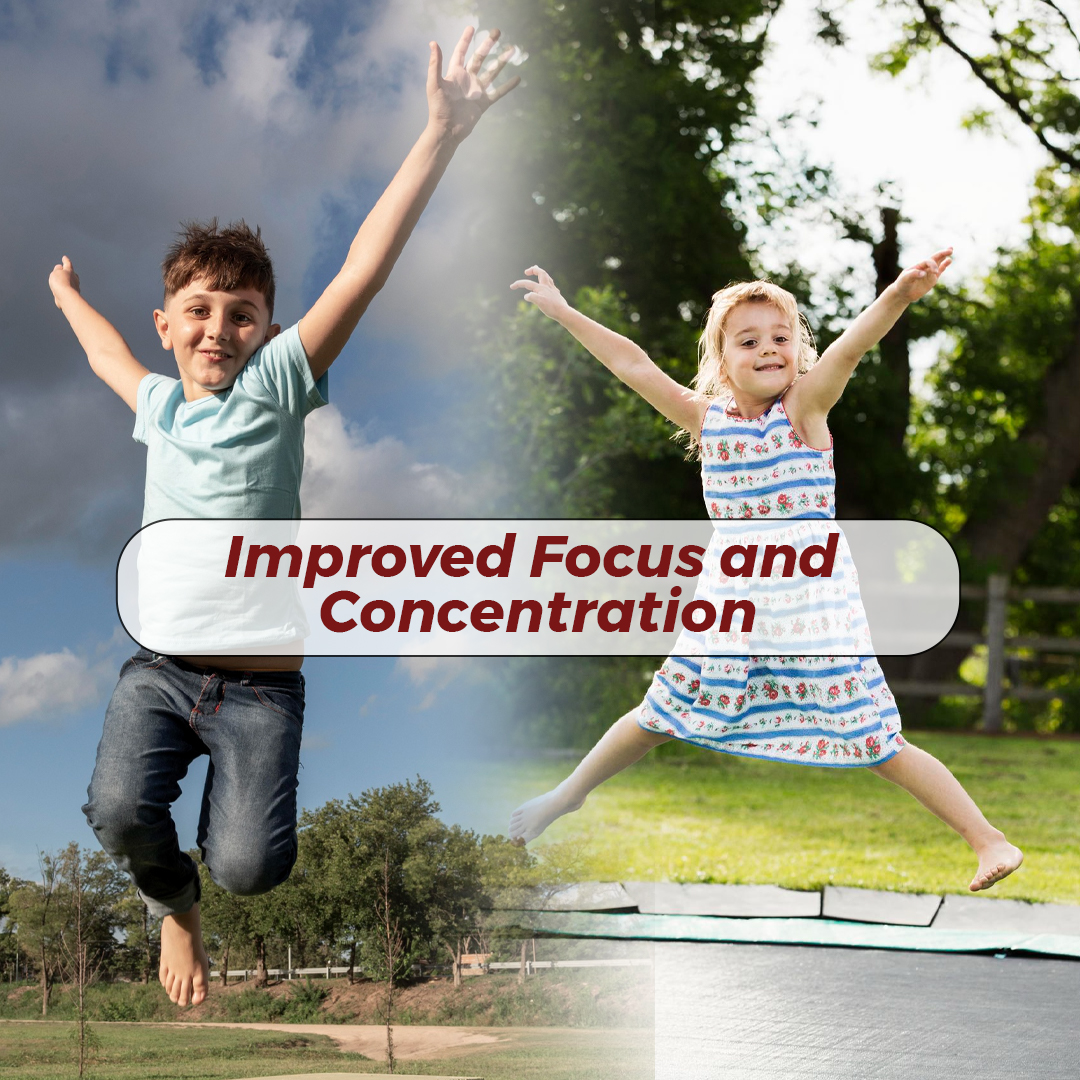
Bouncing on a trampoline has been shown to increase focus and concentration, which can benefit students in the classroom.
Trampolining increases activation in the parts of the brain responsible for balance, motor control, and visual processing. This boost in mental activity and stimulation leads to improved cognitive performance, including enhanced focus, for up to an hour after jumping with proper precautions. Students should make sure they choose best trampoline socks, while jumping on the trampoline. Studies show students who engaged in short bouts of trampolining during school hours had improved focus during lessons, homework, and exams.
Trampolining also increases the production of serotonin, the ‘feel-good’ hormone that helps regulate mood and make you feel alert and focused. The rhythmic, repetitive motion of bouncing stimulates your inner ear, which is closely linked with the areas of the brain involved in attention and concentration.
- Trampolining provides sensory stimulation through activating the vestibular system (responsible for balance and spatial orientation) which leads to increased alertness and wakefulness. This helps students feel more focused and able to concentrate better during lessons.
- The aerobic exercise from trampolining increases blood flow to the brain which supplies oxygen and nutrients to support optimal cognitive performance. This can enhance concentration, memory, problem solving, and decision making.
- Bouncing on a performance trampoline helps release pent up energy and tension, leading to a calmer, more focused state of mind which is ideal for learning and productivity. Students are able to channel their mental and physical energy into academic tasks more effectively after trampolining.
Conclusion
From boosting health and wellbeing to enhancing learning and development to providing an inclusive activity for all, trampolining ticks many boxes. And the costs and space requirements aren’t as challenging as you may think. A trampoline programme could foster community, give young people an energising outlet, and equip them with balance and coordination skills for life. If decision-makers start to see the bigger picture benefits of bringing trampolines into mainstream education, we may start spotting these springy platforms frequently in the playgrounds.
FAQ's
Do schools have trampolines?
Some schools incorporate trampolines into physical education programs or sensory rooms for educational and therapeutic purposes. However, it varies, but a large number of schools are incorporating trampolines.
What are the social benefits of trampolining?
Trampolining promotes social interaction by encouraging group activities and cooperative play. It enhances communication skills and teamwork and fosters a sense of camaraderie among participants.
Why should every kid have a trampoline?
Every child should have a trampoline as it promotes physical activity, enhances motor skills, and provides an enjoyable way to stay active. It also encourages outdoor play, supporting overall health and well-being.
What are the learning outcomes of trampolines?
Trampolines contribute to improved coordination, balance, and spatial awareness. They also help enhance concentration, focus, and discipline, fostering positive learning outcomes for individuals of various ages.
What are the benefits of having a trampoline?
Having a trampoline offers numerous benefits, including increased cardiovascular fitness, strengthened muscles, improved coordination, and a fun way to engage in physical activity. It also provides a platform for social interaction and outdoor play.
DON'T MISS...
- Safety First: 5 Warning Signs Your Trampoline Needs to be Replaced
- The Top 7 Myths About Trampoline - You Should Know
- The Positive Effects of Playground Trampoline on Children's Well-being
- How To Pick The Perfect Playground Trampoline For Your Garden
- 5 Strong Reasons to Add a Commercial Trampoline in Schools and Universities

